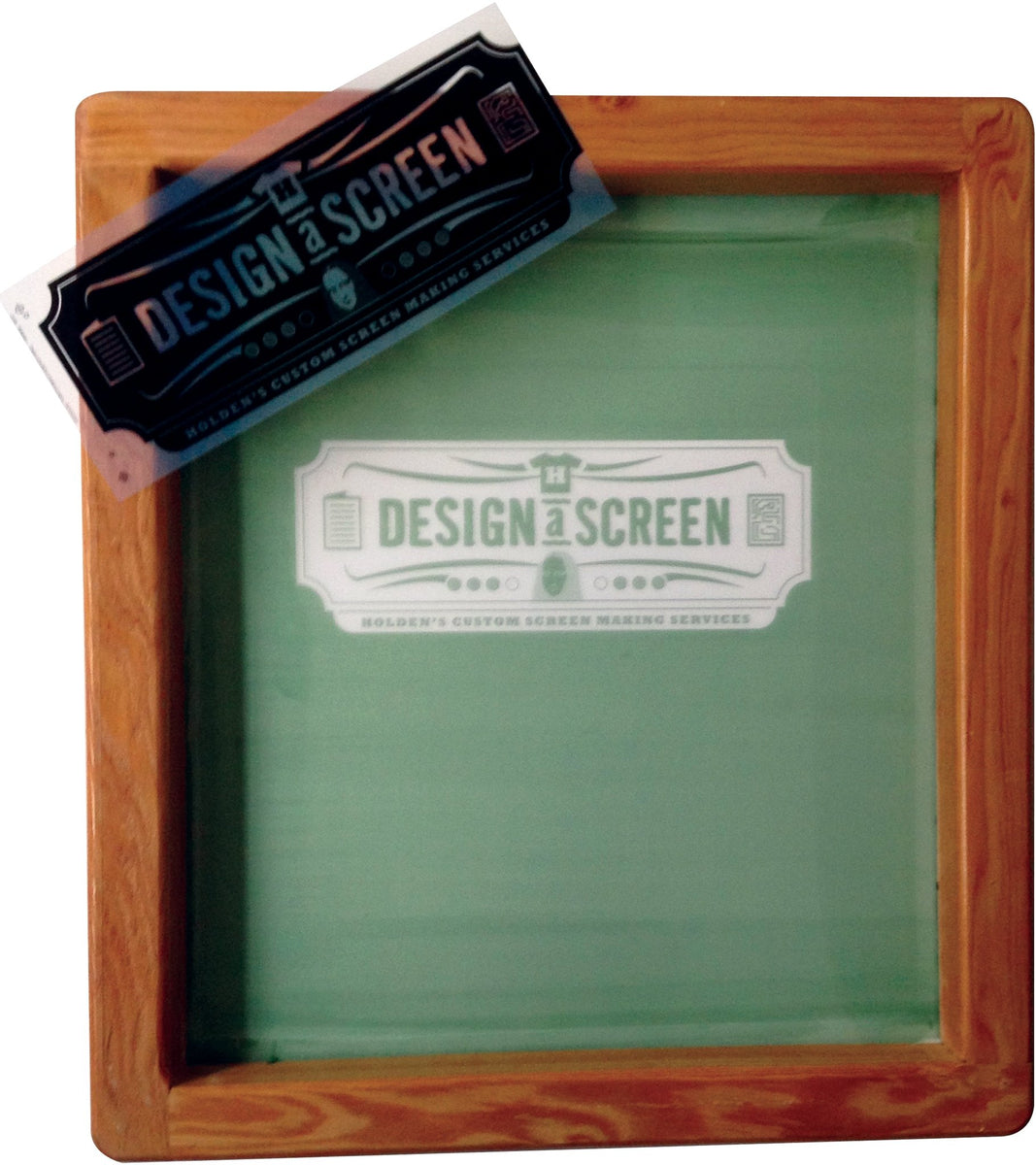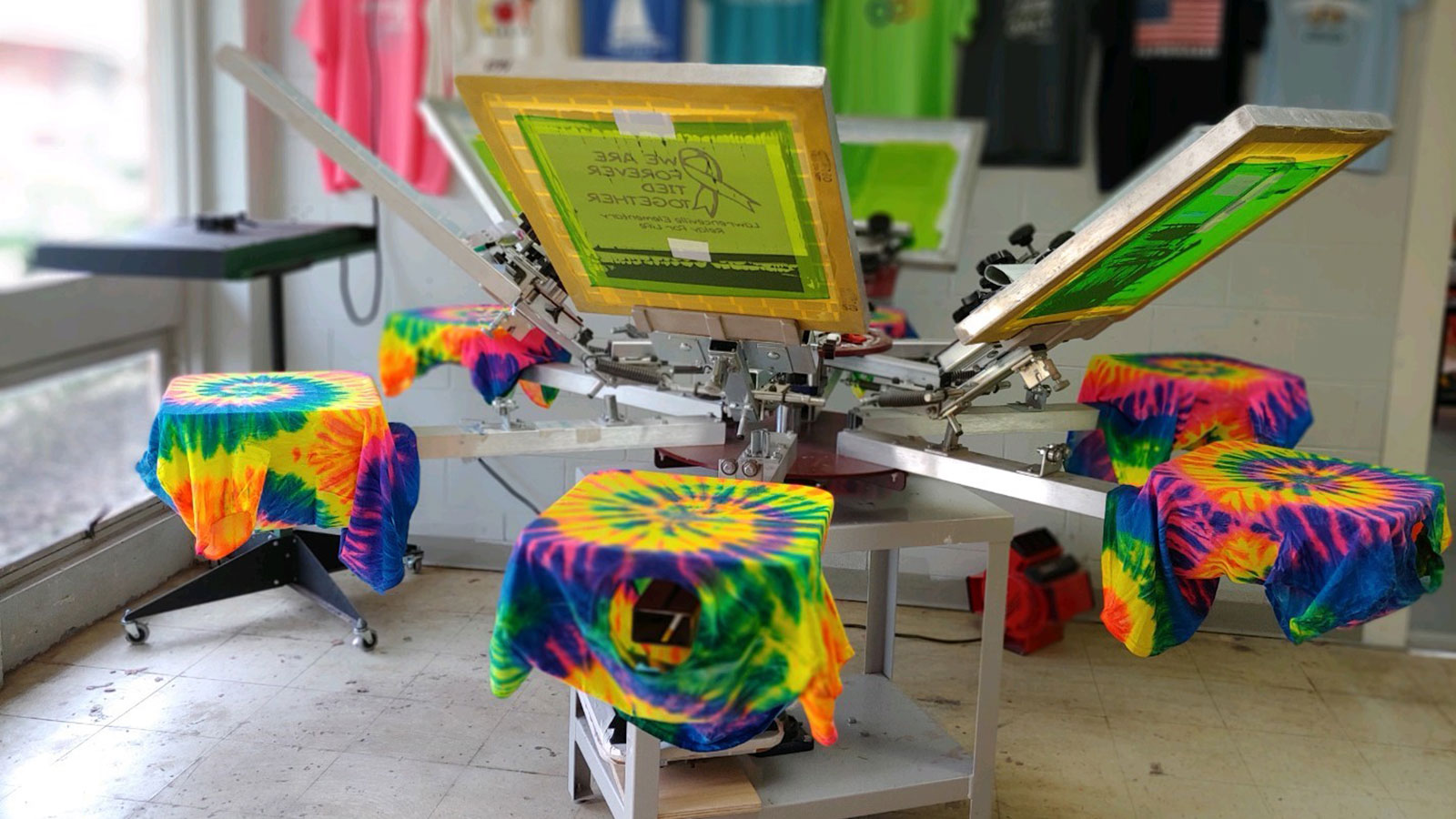High-End Silk Screen Printing for Premium Garments
High-End Silk Screen Printing for Premium Garments
Blog Article
Display Printing Uncovered: Every Little Thing You Required to Know About Tee Shirt and Garment Printing Strategies
Display printing is a remarkable approach that incorporates art with strategy, offering endless opportunities for creativity. Ready to discover the necessary aspects that make display publishing an art kind?
The Fundamentals of Screen Printing: Just How It Works
When you plunge right into display printing, you'll find it's both a scientific research and an art. At its core, screen printing entails producing a pattern, or display, that enables ink to go through only in particular locations (screen printing kit). You begin by selecting your style and preparing your display with a light-sensitive emulsion. As soon as you expose this solution to light, it sets, leaving your layout as a negative room.
Following, you'll blend your inks and prepare your printing surface. Position the screen over the fabric, then utilize a squeegee to push ink with the display onto the garment. This process calls for precision, as you desire clear, vivid prints. After printing, you'll heal the ink with warm, guaranteeing it sticks to the textile and lasts through laundries. Each step is crucial, and understanding them will elevate your screen printing skills, transforming straightforward garments into distinct, meaningful pieces.
Sorts Of Display Printing Strategies
As soon as you grasp the fundamentals of screen printing, it's time to discover the different techniques that can elevate your designs. One popular method is conventional screen printing, where ink is pushed with a stenciled display. This method is excellent for bold, dynamic colors. There's water-based ink printing, which offers a softer feel and is environment-friendly, however it calls for a various method to treating.
One more choice is plastisol printing, recognized for its toughness and brilliant shades, making it a favored for numerous brands. Experiment with halftone printing to develop slope impacts and intricate designs.
Necessary Equipment for Screen Printing
To achieve sensational outcomes in display printing, having the best equipment is essential. You'll need a sturdy screen printing framework, which holds the mesh that moves your style onto the garment. Next, spend in premium mops; these are necessary for applying ink evenly throughout the screen.
Choosing the Right Inks and Products
When picking inks and products for display printing, you require to think about the sort of ink that works best for your project. Consider textile compatibility to ensure your layouts look last and wonderful long. Likewise, explore eco-friendly ink options to make your printing process much more sustainable.
Types of Display Inks
Picking the appropriate screen ink is essential for attaining dynamic, sturdy prints that fulfill your project's requirements. There are numerous sorts of screen inks to analyze. Plastisol ink is popular for its convenience and simplicity of use, providing exceptional shade opacity on dark textiles. Water-based ink, on the other hand, provides a softer feeling and is green, making it perfect for those aiming to reduce their environmental influence. Discharge inks remove dye from the material, resulting in a soft, classic look but require specific handling. Specialized inks, such as metallic or glow-in-the-dark, can add special impacts to your designs. Evaluate your task needs and choose the ink that aligns best with your preferred result.

Textile Compatibility Considerations
Comprehending material compatibility is essential for accomplishing high-quality display prints, especially because different materials respond distinctly to numerous inks. Constantly check your inks on example material to guarantee they adhere correctly and maintain color integrity. Furthermore, maintain in mind that textile weight and structure can influence the final outcome, so choosing the appropriate ink and material combination is important for your project's success.
Eco-Friendly Ink Options
Environment-friendly inks are ending up being a preferred selection for screen printers that intend to decrease their ecological effect while maintaining top quality. When picking inks, consider water-based inks, which are much less dangerous and easier to cleanse up compared to typical solvents. These inks bond well with fabrics, supplying vibrant outcomes without harmful chemicals. You might also discover eco-solvent inks that make use of less unstable natural compounds (VOCs), making them a more secure option for both your wellness and the world.
In addition, seek inks made from renewable energies, such as soy or vegetable-based options. By selecting the right inks and materials, you'll not only create spectacular designs however also contribute to a much more sustainable printing process. Make the button, and your prints will certainly reflect your dedication to the setting!
Preparing Your Design for Display Printing

Submit Layout Requirements
To guarantee your layout looks vivid and sharp on textile, you'll require to pay very close attention to file format needs for screen printing. Beginning with vector documents like AI or EPS, as they can be scaled without shedding high quality. If you make use of raster photos, go with high-resolution files, such as TIFF or PNG, ideally at 300 DPI. Avoid using JPEGs, as they can lose quality when resized. Likewise, make certain your layout has a clear background to prevent undesirable white edges on your prints. Finally, keep color settings in mind; CMYK is basic for display printing, so transform your RGB develops accordingly. By complying with these standards, you'll establish your art work up for a successful print.
Color Splitting Up Methods
Color separation is an essential step in preparing your layout for screen printing, and grasping it can greatly boost your print high quality. You'll need to break your design into specific colors, as each shade requires a separate display throughout printing. This accuracy not only ensures exact color representation but additionally enhances the printing process.
Resolution and Dimension
Accomplishing the best cause screen printing begins with assuring your design has the ideal resolution and size. Preferably, your artwork must go to the very least 300 DPI (dots per inch) for sharp, clear prints. Your last useful site item might look pixelated and unprofessional. if you utilize lower resolution.
When it comes to dimension, take into consideration the measurements of your print area. Layout your artwork to match the final print dimension, ideally developing it in the actual dimensions you'll be printing. In this manner, you'll stay clear of any unanticipated scaling issues.
Constantly examine your layout in both vector and raster styles. Vector graphics can be scaled without losing quality, making them perfect for screen printing. Preparing correctly will ensure your style looks fantastic on every garment!
Step-by-Step Screen Printing Process
Display printing is a dynamic process that allows you to produce dynamic designs on numerous surfaces. To begin, you'll need a screen, emulsion, and your picked ink. Prepare your screen by cleaning it completely. Next, use the solution evenly and allow it completely dry in a dark area. As soon as dry, subject your screen to light with your layout put on it, which will solidify the solution where the light hits, creating a stencil - screen printing kit.
After rinsing the unexposed solution, your display is ready. Establish it up on your printing surface area and straighten your garment below it. Put ink onto the screen and use a squeegee to press the ink via the stencil onto the textile. Raise the display thoroughly and allow the print completely dry. Treat the ink utilizing warm to assure sturdiness. That's it! You have actually effectively screen printed your design.
Tips for Effective Display Printing Projects
While you're diving into your screen printing tasks, keep in mind that preparation is crucial to success. Start by collecting all your products-- inks, screens, mops, and garments. A tidy office helps prevent unwanted errors, so neat up before you start.
Following, verify your art work is high-resolution and properly sized for your garment. Test your screen for proper exposure and clean it thoroughly to stay clear of smudges. When blending your inks, adhere to the supplier's standards to accomplish the appropriate consistency.
Throughout printing, use even pressure with your squeegee for consistent outcomes. Do not hurry; take your time to validate each print meets your standards. After printing, let your garments completely dry entirely before managing or packaging them.
Last but not least, always maintain a sample of your job for future referral. In this manner, you can assess your progress and enhance your methods with time. blog here Satisfied printing!

Frequently Asked Inquiries
The length of time Does It Take to Establish up a Display Printing Task?
Establishing up a display printing task normally takes about half an hour to an hour. You'll prepare the screens, mix inks, and adjust the press. The time differs based on complexity and experience, so stay organized!
Can I Print on Different Textile Keys In Utilizing the Exact Same Technique?
Yes, you can publish on different fabric kinds using the exact same technique, however you'll need to change your settings and inks. Some materials take in ink in a different way, so experimenting guarantees the ideal results for each and every material.
What Prevail Errors to Stay Clear Of in Display Printing?
When display printing, avoid typical mistakes like using the incorrect ink, overlooking correct exposure times, or avoiding pre-press checks. Constantly examine your configuration and preserve tidy screens to guarantee quality results each time.
Exactly How Can I Effectively Clean and Preserve My Screen Printing Tools?
To appropriately clean and preserve your screen printing equipment, you should frequently clean screens with suitable solvents, examine squeegees for wear, and ensure all devices are stored completely dry and dust-free. Consistency improves and stops costly repair work efficiency.
Is Screen Printing Eco-friendly Contrasted to Other Methods?
Screen printing can be a lot more eco-friendly than other techniques, specifically if you utilize water-based inks and eco-conscious materials. By selecting lasting supplies and techniques, you minimize waste and reduce your effect on the planet.
Display garment printing Printing Uncovered: Everything You Need to Know About Tee Shirt and Garment Printing Techniques
At its core, screen printing entails developing a pattern, or display, that permits ink to pass through only in certain areas. Setting the screen over the material, after that utilize a squeegee to press ink with the display onto the garment. One prominent technique is typical display printing, where ink is pressed with a stenciled display.When picking inks and materials for screen printing, you need to take into account the type of ink that functions best for your job.
Report this page